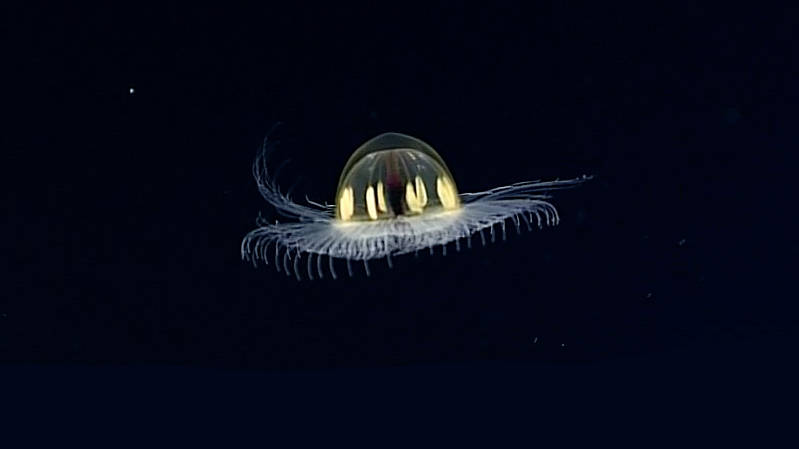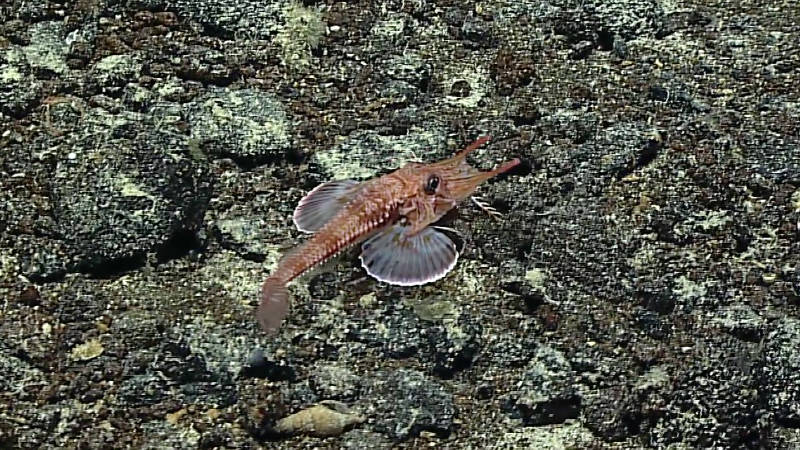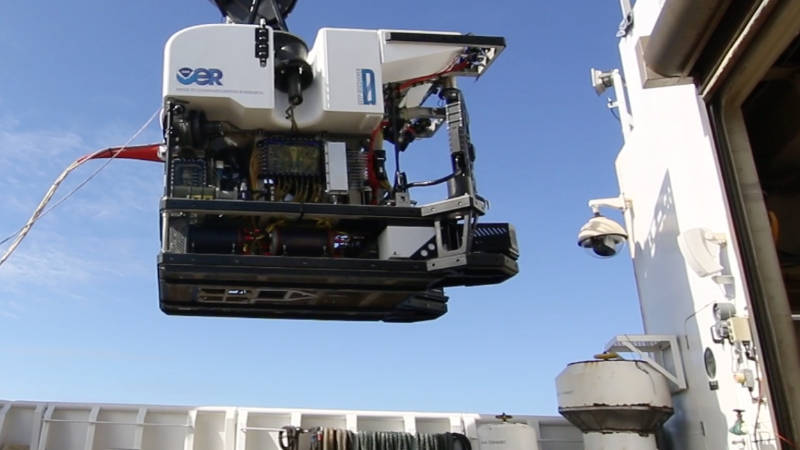
This page contains photos and videos associated with the 2017 American Samoa Expedition: Suesuega o le Moana o Amerika Samoa.

Cosmic Jellyfish. Image courtesy of the NOAA Office of Ocean Exploration and Research, 2017 American Samoa. Download image (jpg, 13 KB).
This spectacular little jelly was imaged during our first dive on 'Utu' seamount, on February 21.
The jelly (hydromedusa) is in a family of hydromedusae called Rhopalonematidae, which is known for the canals running vertically on the inside of the bell, gonads attached to these canals, and sometimes having two sets of tentacles.
Scientists have seen this species on previous Okeanos Explorer expeditions. In this video, you can see the perfectly relaxed arrangement of the two sets of tentacles; scientists think this is a position that allows for optimum feeding in the midwater environment at ~3,000 meters. Through remotely operated vehicle video observations such as this, we can learn much about the animals in the midwater and what they are up to when we can catch them in an undisturbed manner.
Download video (mp4, 97.4 MB). Video courtesy of the NOAA Office of Ocean Exploration and Research, 2017 American Samoa.
Date: February 21, 2017
Approximate Depth: 3,020 meters
Location: "Utu" Seamount, an unexplored located northern region of the American Samoa Exclusive Economic Zone.
Dive Summary

Armored Searobin. Image courtesy of the NOAA Office of Ocean Exploration and Research, 2017 American Samoa. Download image (jpg, 132 KB).
Video of a searobin using modified fins to move across the seafloor during a dive within the Ta'u Unit of National Marine Sanctuary of American Samoa.
Armored sea robins are related to the sea robins found in shallow water along the Atlantic and Gulf of Mexico coasts of the U.S. They differ from shallow water sea robins by having four rows of bony plates along the body. Each plate has a thick, curved, short spine—hence the common name. They also have horn-like projections on each side of the snout and branched barbels (whiskers) on the bottom of head in front of the mouth. The branched barbels have taste buds and are used to sense food on the bottom.
The fan-like fins on each side of the body behind the head (pectoral fins) have stiffened rays. In sea robins, including the armored sea robin, the first few rays are free from the membranes of the rest of the fin and are very thick. The fish uses these thickened, stiff fin rays to "walk" along the bottom. That is the usual form of locomotion for sea robins, instead of swimming like most other fishes.
Download video (mp4, 95.2 MB). Video courtesy of the NOAA Office of Ocean Exploration and Research, 2017 American Samoa.
Date: February 21, 2017
Approximate Depth: 500 meters
Location: Ta'u Unit, National Marine Sanctuary of American Samoa.
Video Speaker: Bruce Mundy, Fishery Biologist, NOAA National Marine Fisheries Service, Pacific Islands Fisheries Science Center
Dive Summary

ROV Launch. Image courtesy of the NOAA Office of Ocean Exploration and Research. Download image (jpg, 44 KB).
Video footage of remotely operated vehicles Deep Discoverer and Seirios being launched over the side of NOAA Ship Okeanos Explorer.
Download video (mp4, 122 MB). Video courtesy of the NOAA Office of Ocean Exploration and Research.